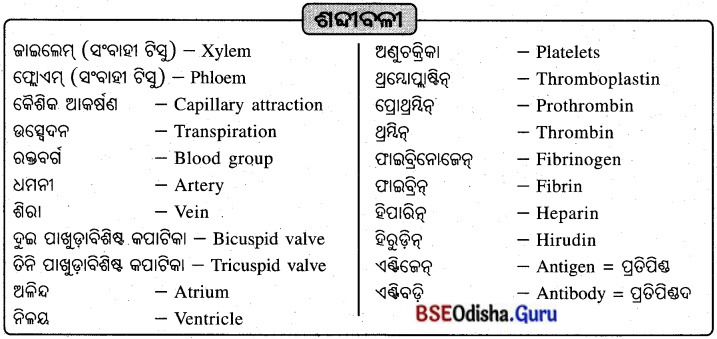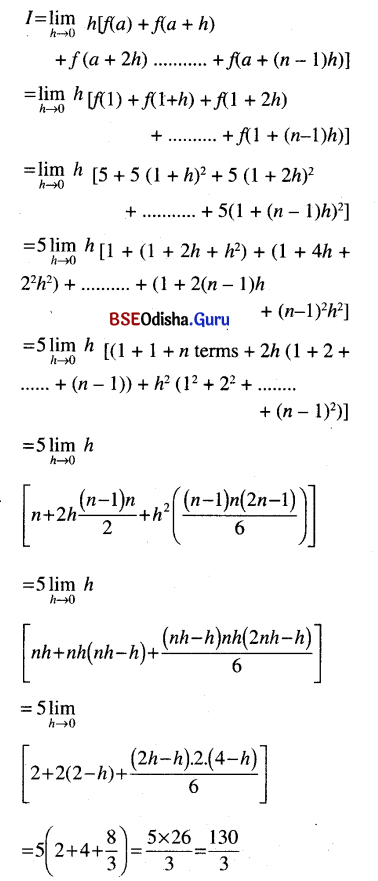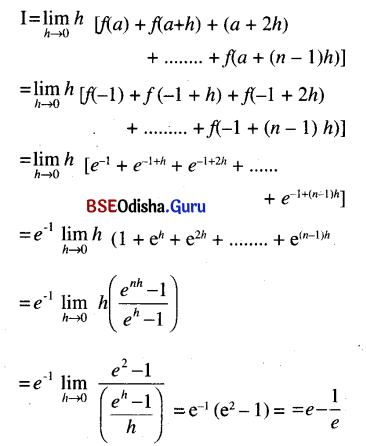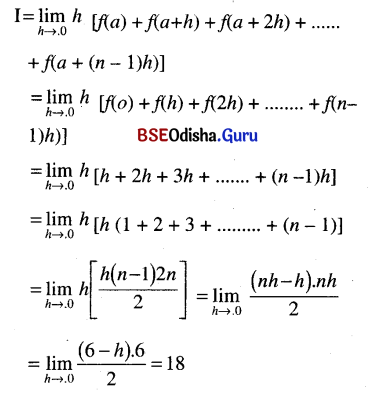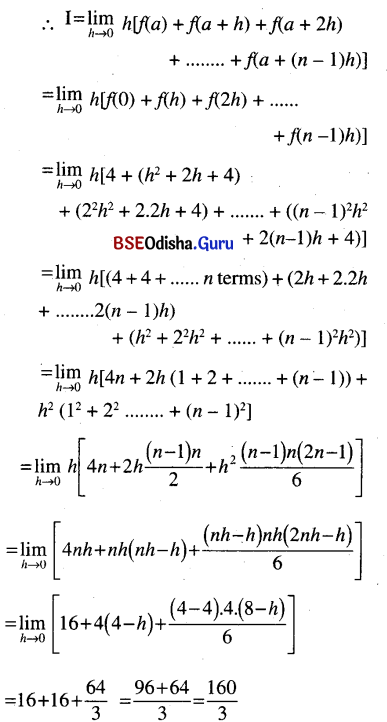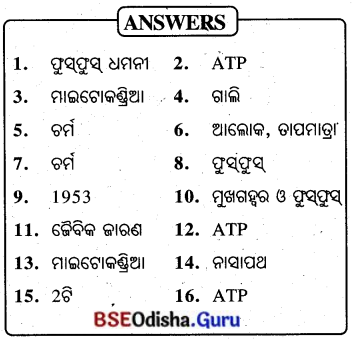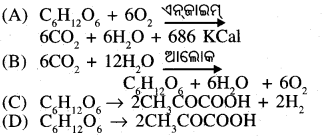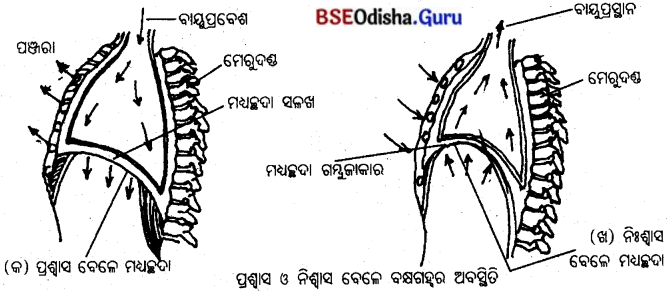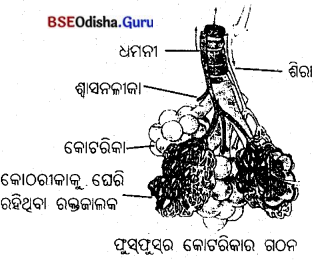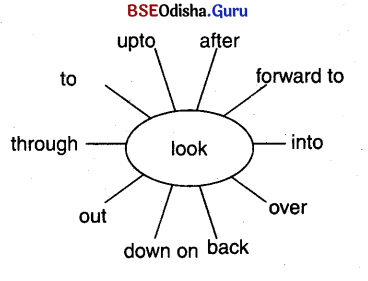Odisha State Board BSE Odisha 10th Class Hindi Solutions Chapter 4 गिल्लू Textbook Exercise Questions and Answers.
BSE Odisha Class 10 Hindi Solutions Chapter 4 गिल्लू
प्रश्न और अभ्यास (ପ୍ରଶ୍ନ ଔର୍ ଅଭ୍ୟାସ)
1. निम्नलिखित प्रश्नों के उत्तर दो-तीन वाक्यों में दीजिए:
(ନିମ୍ନଲିଖୂ ପ୍ରଶ୍ନ କେ ଉତ୍ତର୍ ଦୋ-ତୀନ୍ ୱାଜ୍ୟୋ ମେଁ ଦୀଜିଏ : )
(ନିମ୍ନଲିଖ ପ୍ରଶ୍ନଗୁଡ଼ିକର ଉତ୍ତର ଦୁଇ-ତିନୋଟି ବାକ୍ୟରେ ଦିଅ : )
(क) सोनजुही में लगी पीली कली को देखकर लेखिका के मन में कौन-से विचार उमड़ने लगे?
(ସୋନଜୁହୀ ମେଁ ଲଗୀ ପୀଲୀ କଲୀ କୋ ଦେଖକର୍ ଲେଖିକା କେ ମନ୍ ମେଁ କୌନ୍-ସେ ବିଚାର ଉମନେ ଲଗେ ?)
उत्तर:
लेखिका जब सोनजुही में लगी पीली कली को देखती तो उनके मन में यूँ ही गिलहरी के उस छोटे से जीव की याद आ जाती। वह छोटा जीव इस लता की घनी छाया में छिपकर बैठता था और फिर लेखिका के निकट पहुँचते ही उनके कंधे पर कूदकर लेखिका को चौका देता था। उस दिन लेखिका को कली की खोज रहती थी, पर आज उन्हें उस लघु प्राण की खोज है।
(ख) गिलहरी के घायल बच्चे का उपचार किस प्रकार किया गया?
(ଗିରୀ କେ ଘାୟଲ୍ ବଜେ କା ଉପଚାର୍ କିସ୍ ପ୍ରକାର୍ କିୟା ଗୟା ?)
उत्तर:
लेखिका उस छोटे से बच्चे को हौले से उठाकर अपने कमरे में लाई। फिर रुई से रक्त पोंछकर धावों पर पेंसिलिन का मरहम लगाया। रुई की पतली बत्ती दूध में भिगीकर जैसे -जैसे उसके नन्हें से मुँह में लगाई पर मुँह खुल न सका और दूध की बूदें दोनों और ढुलक गई। कई घंटों के उपचारके बाद उसके मुँह में एक बूँद पानी पिलाया जा सका।
(ग) लेखिका का ध्यान आकर्षित करने के लिए गिल्लू क्या करता था?
(ଲେଖ୍କା କା ଧ୍ୟାନ୍ ଆକର୍ଷିତ୍ କର୍ନେ କେ ଲିଏ ଗିଲୁ କ୍ୟା କର୍ତା ଥା ?)
उत्तर:
लेखिका का ध्यान आकर्षित करने के लिए गिल्लू उनके पैर तक आकर सर्र से परदे पर चढ़ जाता और फिर उसी तेजी से उतरता गिल्लू का यह दौड़ने का क्रम तब तक चलता जब तक लेखिका उसे पकड़ने के लिए उठ न जाती।
(घ) गिल्लू का कार्य-कलाप कैसा था?
(ଗିଲ୍ କା କାର୍ଯ୍ୟ-କଲାପ୍ କୈସା ଥା ?)
उत्तर:
गिल्लू खुद अपना झूल्ला हिलाकर अपने घर में झूलता और अपनी काँच के मनको-सी आँखे से कमरे के भीतर और खिड़की से बाहर न जाने बचा देखता समझता रहता था। परंतु उसकी समझदारी और कार्यकलाप पर सबका आश्चर्य होता था। कभी-कभी लेखिका जब गिल्लू को एक लिफाफे में बंद कर देती थी तब वह घंटों मेज पर दीवार के सहारे खड़ा रहकर अपनी चमकीली आँखों से लेखिका का कार्यकलाप देखा करता।
(ङ) लेखिका को क्यों ऐसा लगा कि गिल्लू को मुक्त करना आवश्यक है?
(ଲେଖୁ କୋ ଜ୍ୟୋ ଐସା ଲଗା କି ଗିଲ୍ କୋ ମୁକ୍ତ କର୍ନା ଆଶ୍ୟକ୍ ହୈ ?)
उत्तर:
वसंत ऋतु के आते ही नीम चमेली की गंध लेखिका के कमरे में हौले-हौले आने लगी।
बाहर की गिलहरियाँ खिड़की की जाली के पास आकर चिक्- चिक् करके न जाने क्या कहने लगती? गिल्लू को जाली के पास बैठकर अपनेपन से बाहर झाँकते देखकर लेखिका को लगा कि उसे मुक्त करना आवश्यक है।
(च) लेखिका की अस्वस्थता में गिल्लू क्या करता था?
(ଲେଖିକା କୀ ଅସ୍ବସ୍ଥତା ମେଁ ଗିଲ୍ କ୍ୟା କର୍ତା ଥା ?)
उत्तर:
लेखिका की अस्वस्थता में गिल्लू तकिए पर सिरहाने बैठकर नन्हें-नन्हें पंजो से उनके सिर और बालों को इतने हौले-हौले सहलाता था। लेखिका को गिल्लू का सिरहाने से हट जाना एक परिचारिका के हटने के समान लगता था।
(छ) गरमी से बचने का कौन-सा उपाय गिल्लू ने खोज निकाला था?
(ଗରମୀ ସେ ବଚନେ କା କୌନ୍-ସା ଉପାୟ ଗିଲୁ, ନେ ଖୋଜ୍ ନିକାଲା ଥା ?)
उत्तर:
गरमी से बचने के लिए गिल्लू एक नया उपाय खोज निकाला था। वह लेखिका के पास रखी सुराही पर लेट जाता था, इस प्रकार समीप भी रहता था और उसपर गरमी का कुछ असर न पड़ता था।
(ज) गिल्लू की किन चेष्टाओं से लेखिका को लगा कि अब उसका अंत समय समीप है?
(ଗିଲୁ, କୀ କିନ୍ ଚେଷ୍ଟାଓଁ ସେ ଲେଖ୍କା କୋ ଲଗା କି ଅବ୍ ଉସ୍କା ଅନ୍ତ ସମୟ ସମୀପ୍ ହୈ ?)
उत्तर:
गिलहरियों के जीवन की आयु दो वर्ष से अधिक नहीं होती। अतः गिल्लू की जीवन यात्रा का अंत आ ही गया। दिन भर उसने न कुछ खाया न ही वह खेलने बाहर गया। रात में अपने जीवन के अंत समय की यातना में भी वह अपने सूले से उतरकर लेखिका के बिस्तर पर आया और ठंड़े पंजो से उनकी उँगली पकड़कर हाथ से चिपक गया जिसे उसने अपने बचपन की मरणासन्त स्थिति में पकड़ा था।
(झ) सोनजुही की लता के नीचे बनी गिल्लू की समाधि से लेखिका के मन में किस विश्वास का जन्म होता है?
(ସୋନଜୁହୀ କୀ ଲତା କେ ନୀଚେ ବନୀ ଗିଲ୍ କୀ ସମାଧ୍ ସେ ଲେଖ୍କା କେ ମନ ମେଁ କିସ୍ ବିଶ୍ଵାସ୍ କା ଜନ୍ମ ହୋତା ହୈ ?)
उत्तर:
सोनजुही की लता के नीचे गिल्लू की समाधि दी गई थी। इसलिए कि उसे यह लता सबसे अधिक प्रिय थी। उस समय लेखिका को ऐसा लगता था कि वह लघु जीव किसी वसंत ऋतु के दिनों में जुही के पीले रंग के छोटे- छोटे घूल के रूप में खिल जाने का विश्वास लेखिका को संतोष देता था।
(ञ) लेखिका को उस लघुप्राण गिल्लु की खोज क्यों थी?
(ଲେଖ୍କା କୋ ଉସ୍ ଲଘୁପ୍ରାଣ ଗିଲ୍ କୀ ଖୋଜ୍ ଜ୍ୟୋ ଥୀ ?)
उत्तर:
लेखिका की नजर सोनजुही की लता में खिली उस पीली कली पर पड़ी जो अभी-अभी खिली है। उस पीली कली का देखते ही लेखिका को गिलहरी के उस छोटे जीव की याद आने लगी। जो इस लता की सघन छाया में छिपकर बैठता चा। फिर यह जीव लेखिका के पास पहुँचते है। उनके कंधे पर कूद जाता और उन्हें चौका देता था। उस समय लेखिका को पीली क़ली की खोज थी पर आज उन्हें उस पीली कली के रूप में उस लघुप्राण की खोज है।

2. निम्नलिखित प्रश्नों के उत्तर एक या दो वाक्यों में दीजिए:
(ନିମ୍ନଲିଖୂ ପ୍ରଶ୍ନ କେ ଉତ୍ତର୍ ଦୋ-ତୀନ୍ ୱାଜ୍ୟୋ ମେଁ ଦୀଜିଏ : )
(ନିମ୍ନଲିଖ ପ୍ରଶ୍ନଗୁଡ଼ିକର ଉତ୍ତର ଦୁଇ-ତିନୋଟି ବାକ୍ୟରେ ଦିଅ : )
(क) किसे देखकर लेखिका को गिल्लू का स्मरण हो आया?
(କିସେ ଦେଖ୍କର୍ ଲେଖ୍କା କୋ ଗିଲ୍ କା ସ୍ମରଣ୍ ହୋ ଆୟା ?)
उत्तर:
सोनजुही की लता में एक पीली कली को देखकर लेखिका को गिल्लू का स्मरण हो आया।
(ख) गिल्लू लेखिका को कैसे चौंका देता था?
(ଗିଲୁ ଲେଖୁ କୋ କୈସେ ଚୌକା ଦେତା ଥା ?)
उत्तर:
कभी फूलदान के फूलों में, कभी परदे की चुन्नट में और कभी सोनजूही की पत्तियों में छिपकर गिल्लू लेखिका को चौंका देता था।
(ग) सोनजूही की स्वर्णिम कली को देखकर लेखिका को क्या लगा?
(ସୋନଜୂହୀ କୀ ସୃଷ୍ଟିମ୍ କଳୀ କୋ ଦେଖକର୍ ଲେଖ୍କା କୋ କ୍ୟା ଲଗା ?)
उत्तर:
सोनजूही की स्वर्णिम कली को देखकर लेखिका को लगा कि कहीं स्वर्णिम कली के बहाने गिल्लू उन्हें चौंकाने ऊपर तो नहीं आ गया।
(घ) कौवे को कब सम्मानित किया जाता है?
(କୌୱେ କୋ କବ୍ ସମ୍ମାନିତ କିମ୍ବା ଜାତା ହୈ ?)
उत्तर:
कौवे को पितरपक्ष में सम्मानित किया जाता है।
(ङ) लघुप्राण क्यों निश्चेष्ट-सा गमले में चिपटा पड़ा था?
(ଲଘୁପ୍ରାଣ୍ଡ୍ କୁଁ ନିଶ୍ଚେଷ୍ଟ-ସା ଗମଲେ ହେଁ ଚିପଟା ପଢ଼ା ଥା ?)
उत्तर:
काकद्वय की चोंचों के दो घाव के कारण लघुप्राण निश्चेष्ट – सा गमले में चिपटा पड़ा था।
(च) भूख लगने पर गिल्लू क्या करता था?
(ଭୂଖ୍ ଲଗ୍ନେ ପର୍ ଗିଲ୍ କ୍ୟା କର୍ତା ଥା?)
उत्तर:
भूख लगने पर गिल्लू चिक-चिक करके लेखिका को सूचना देता था।
(छ) गिल्लू का नित्य का क्रम कैसा था?
(ଗିଲ୍ କା ନିତ୍ୟ କା କ୍ରମ୍ କୈସା ଥା ?)
उत्तर:
लेखिका के कॉलेज से लौटने पर जैसे ही कमरा खोलकर वह भीतर पैर रखती, उसी समय गिल्लू अपने जाली के द्वार से भीतर उठकर उनके पैर से सिर और सिर से पैर तक दौड़ लगाने लगता था जो कि उसका नित्य का क्रम था।
(ज) लेखिका की अस्वस्थता के समय गिल्लू का हटना क्यों एक परिचारिका के हटने के समान लगता था?
(ଲେଖ୍କା କୀ ଅସୁସ୍ଥତା କେ ସମୟ ଗିଲ୍ କା ହଟନା କେଁ ଏକ ପରିଚାରିକା କେ ହଟନେ କେ ঘগা?
उत्तर:
लेखिका की अस्वास्थता के समय गिल्लू तकिए पर सिरहाने बैठकर नन्हें-नन्हें पंजो से उनके सिर और बालों को इसप्रकार हौले हौले सहलाता था कि उसका हटना एक परिचारिका के हटने के समान लगता था।
(झ) गिल्लू की जीवन-यात्रा का अंत क्यों आ गया?
(ଗିଲ୍ କୀ ଜୀବନ୍-ଯାତ୍ରା କା ଅଂତ୍ ଜ୍ୟୋ ଆ ଗୟା ?)
उत्तर:
गिलहरियों के जीवन की अवधि दो वर्ष से अधिक नहीं होती, गिल्लू ने यह अवधि पूरी कर ली थी। अत: गिल्लू की जीवन-यात्रा का समय आ गया।
(ञ) कौन-से स्पर्श के साथ ही गिल्लू किसी और जीवन में जागने के लिए सो गया?
(କୌନ୍-ସେ ସ୍ପର୍ଶ କେ ସାଥ୍ ହୀ ଗିଲ୍ କିସୀ ଔର୍ ଜୀୱନ୍ ମେଁ ଜାଗ୍ କେ ଲିଏ ସୋ ଗୟା ?)
उत्तर:
प्रभात की प्रथम किरण के स्पर्श के साथ ही गिल्लू किसी और जीवन में जागने के लिए सो गया ।

3. निम्नलिखित प्रश्नों के उत्तर एक-एक शब्द में दीजिए :
(ନିମ୍ନଲିଖୂ ପ୍ରଶ୍ନ କେ ଉତ୍ତର୍ ଦୋ-ତୀନ୍ ୱାଜ୍ୟୋ ମେଁ ଦୀଜିଏ : )
(ନିମ୍ନଲିଖ ପ୍ରଶ୍ନଗୁଡ଼ିକର ଉତ୍ତର ଦୁଇ-ତିନୋଟି ବାକ୍ୟରେ ଦିଅ : )
(क) लघुप्राण किसे कहा गया है?
(ଲଘୁପ୍ରାଣ୍ କିସେ କହା ଗୟା ହୈ ?)
उत्तर:
गिलहरी को. (गिल्लू)
(ख) दो कौवे कैसा खेल खेल रहे थे?
(ଦୋ କୌ କୈସା ଖେଲ୍ ଖେଲ୍ ରହେ ଥେ ?)
उत्तर:
छुआ-छुऔवल
(ग) गिल्लू के जीवन में प्रथम वसंत आने पर क्या प्रभाव पड़ा?
(ଗିଲୁ, କେ ଜୀୱନ୍ ମେଁ ପ୍ରଥମ ବସନ୍ତ ଆମେ ପର୍ କ୍ୟା ପ୍ରଭାୱ ପଡ଼ା ?)
उत्तर:
अपनापन
(घ) गिल्लू किसका नेता बनकर हर डाल पर उछलता – कूदता रहता था?
(ଗିଲୁ କିସ୍ ନେତା ବନ୍କର୍ ହର୍ ଡାଲ୍ ପର୍ ଉଛଲତା-କୂଦତା ରହତା ଥା ?)
उत्तर:
गिलहरियों का
(ङ) किसके पास बहुत-से पशु-पक्षी हैं?
(କିସ୍ ପାସ୍ ବହୁତ୍-ସେ ପଶୁ-ପକ୍ଷୀ ହୈ ?)
उत्तर:
लेखिका
(च) गिल्लू का प्रिय खाद्य कौन-सा था?
(ଗିଲ୍ କା ପ୍ରିୟ ଖାଦ୍ୟ କୌନ୍-ସା ଥା?)
उत्तर:
काजू
(छ) लेखिका की अस्वस्थता में गिल्लू कहाँ बैठता था?
(ଲେଖ୍କା କୀ ଅସ୍ବସ୍ଥତା ମେଁ ଗିଲ୍ କର୍ତା ବୈଠତା ଥା ?)
उत्तर:
सिरहाने
(ज) गिलहरियों के जीवन की अवधि कितने वर्ष से अधिक नहीं होती?
(ଗିରିୟୋ କେ ଜୀୱନ୍ କୀ ଅଧ୍ କିତନେ ୱର୍ଷ ସେ ଅଧିକ ନଦୀ ହୋତୀ?)
उत्तर:.
दो वर्ष
(झ) गिल्लू ने कैसी स्थिति में लेखिका की उँगली को पकड़ा था?
(ଗିଲ୍ ନେ କୈସୀ ସ୍ଥିତି ମେଁ ଲେଖ୍କା କୀ ଉଁଗ୍ଲୀ କୋ ପକଡ଼ା ଥା ?)
उत्तर:
मरणासन्न
(ञ) गिल्लू को कहाँ समाधि दी गयी?
(ଗିଲ୍ କୋ କହାଁ ସମାଧ୍ ଦୀ ଗୟୀ ?)
उत्तर:
सोनजुही की लता के नीचे

4. निम्नलिखित अवतरणों के अर्थ स्पष्ट कीजिए:
(ନିମ୍ନଲିଖୂ ପ୍ରଶ୍ନ କେ ଉତ୍ତର୍ ଦୋ-ତୀନ୍ ୱାଜ୍ୟୋ ମେଁ ଦୀଜିଏ : )
(ନିମ୍ନଲିଖ ପ୍ରଶ୍ନଗୁଡ଼ିକର ଉତ୍ତର ଦୁଇ-ତିନୋଟି ବାକ୍ୟରେ ଦିଅ : )
(क) तब मुझे कली की खोज रहती थी, पर आज उस लघुप्राण की खोज है।
(ତବ୍ ମୁଝେ କଲୀ କୀ ଖୋଜ୍ ରହତୀ ଥୀ, ପର୍ ଆଜ୍ ଉସ୍ ଲଘୁପ୍ରାଣ୍ଡ୍ କୀ ଖୋଜ୍ ହୈ ।)
उत्तर:
तब मुझे ……………………… लघुप्राण की खोज है।
उपरोक्त वाक्य में लेखिका ने गिल्लू के बारे में कहा है। सोनजुही की लता में पीली कली को देखकर लेखिका को गिल्लू की याद आती है और वह कहती हैं कि आज सोनजुही की लता में वे लघुप्राण गिल्लू को खोज रही हैं।
(ख) यह काक भुशुण्डि भी विचित्र पक्षी है- एक साथ समादरित, अनादरित, अति सम्मानित, अति अवमानित।
(ୟହ କାକ୍ ଭୁଶୁଣ୍ଡି ଭୀ ବିଚିତ୍ର ପକ୍ଷୀ ହୈ ଏକ୍ ସାଥ୍ ସମାଦରିତ୍, ଅନାଦରିତ୍, ଅତି ସମ୍ମାନିତ୍, ଅତି ଅବମାନିତ୍ ।)
उत्तर:
यह काक भुशुण्डि ………………. अवमानित।
यह बात लेखिका ने काकभुशुण्डि के लिए कहा है। वे कहती हैं कि ये काकभुशुण्डि बड़ा विचित्र पक्षी होता है। ये अपने कार्य के लिए कभी अति सम्मानित होते हैं तो कभी अति अपमानित। कभी इन्हें आदर किया जाता है तो कभी अनादर।
(ग) उसका हटना एक परिचारिका के हटने के समान लगता।
(ଉସ୍ ହଟ୍ ଏକ୍ ପରିଚାରିକା କେ ହଟ୍ କେ ସମାନ୍ ଲଗ୍ନତା ।)
उत्तर:
उसका हटना……………………….समान लगता।
लेखिका के अस्वस्थ के समय गिल्लू तकिए पर सिरहाने बैठकर अपने नन्हें-नन्हें पंजों से उनके सिर और बालों को हौले-हौले सहलाता रहता था। उस समय गिल्लू का हटना लेखिका के लिए एक परिचारिका के हटने के समान लगता था।
(घ) प्रभात की प्रथम किरण के स्पर्श के साथ ही वह किसी और जीवन में जागने के लिए सो गया।
(ପ୍ରଭାତ୍ କୀ ପ୍ରଥମ୍ କିରଣ୍ କେ ସ୍ପର୍ଶ କେ ସାଥ ହୀ ୱହ କିସୀ ଔର୍ ଜୀୱନ୍ ମେଁ ଜାଗ୍ନେ କେ ଲିଏ ସୋ ଗୟା ।)
उत्तर:
प्रभात की ……………….. सो गया।
इसमें लेखिका गिल्लू के जीवन की अंतिम क्षण के बारे में बताते हुए कहती हैं कि प्रभात की प्रथम किरण के स्पर्श के साथ ही गिल्लू इस दुनिया से चल बसा। लेखिका के अनुसार गिल्लू इस जीवन में आखरी बार सो गया फिर न उठने के लिए। और वह फिर से एक नए जीवन जीने के लिए इस जीवन को हमेशा के लिए आलबिदा कह दिया।
(ङ) उस लघुगात का, किसी वासंती दिन, जुही के पीताभ छोटे फूल में खिल जाने का विश्वास, मुझे सन्तोष देता है।
(ଉସ୍ ଲଘୁଗାତ୍ କା, କିସୀ ବାସନ୍ତୀ ଦିନ୍, ଜୁହୀ କେ ପୀତାଭ୍ ଛୋଟେ ଫୁଲ୍ ମେଁ ଖୁଲ୍ ଜାନେ କା ବିଶ୍ଵାସ୍, ମୁଝେ ସନ୍ତୋଷ୍ ଦେତା ହି ।)
उत्तर:
उस लघुगात का ……………………… संतोष देता है।
सोनजुही की लता के नीचे गिल्लू को समाधि दी गई थी क्योंकि गिल्लू को वह लता सबसे अधिक प्रिय थी। लेखिका को लग रहा था जैसे वहाँ पीले रंग का फूल नहीं खिला हुआ था उस जगह गिल्लू का छोटा शरीर जैसे कली के रूप खिल रहा था । जिसे देखकर लेखिका को आत्मसंतोष होता था।

5. रिक्त स्थानों को भरिए :
(ରିକ୍ତ ସ୍ଥାନୌ କୋ ଭରିଏ : )
(ଶୂନ୍ୟସ୍ଥାନ ପୂରଣ କର : )
(क) कौन जाने ………………….. के बहाने वही मुझे चौंकाने ऊपर आ गया हो।
उत्तर:
स्वर्णिम कली
(ख) ……………………… की गंध मेरे कमरे में हौले-हौले आने लगी।
उत्तर:
नीम चमेली
(ग) हमने उसकी …………………….. संज्ञा को व्यक्तिवाचक का रूप दे दिया।
उत्तर:
जातिवाचक
(घ) जिसे उसने बचपन की …………………. स्थिति में पकड़ा था।
उत्तर:
मरणासन्न
(ङ) ……………………… छोटे फूल में खिल जानेका विश्वास मुझे सन्तोष देता है।
उत्तर:
जुही के पीताभ
6. निम्नलिखित प्रश्नों के सही उत्तर दिये गये विकल्यों से चुनकर लिखिए:
(ନିମ୍ନଲିଖୂ ପ୍ରଶ୍ନ କେ ସହୀ ଉତ୍ତର୍ ଦିୟେ ଗୟେ ବିକର୍ଣ୍ଣୋ ମେଁ ସେ ଚୁକର୍ ଲିଗ୍ : )
(ନିମ୍ନଲିଖ ପ୍ରଶ୍ନଗୁଡ଼ିକର ଠିକ୍ ଉତ୍ତର ପ୍ରଦତ୍ତ ବିକଳ୍ପଗୁଡ଼ିକ ମଧ୍ୟରୁ ବାଛି ଲେଖ : )
(क) दो कौवे कैसा खेल खेल रहे थे?
(ଦୋ କୌ କୈସା ଖେଲ୍ ଖେଲ୍ ରହେ ଥେ ?)
(i) दौड़ लगाने का
(ii) छूआ-छुऔवल
(iii) खाना खाने का
उत्तर:
(ii) छूआ-छुऔवल
(ख) लेखिका के किस विवेचन में अचानक बाधा आ पड़ी?
(ଲେଖିକା କେ କିସ୍ ୱିୱେଚନ୍ ମେଁ ଅଚାନକ୍ ବାଧା ଆ ପତ୍ନୀ ?)
(i) शिव पुराप्प
(ii) काक पुराण
(iii) सूर्य पुराण
(iv) नृसिंह पुराण
उत्तर:
(ii) काक पुराण
(ग) लेखिका के कमरे में किसकी गंध हौले-हौले आने लगी?
(ଲେଖିକା କେ କମରେ ମେଁ କିସ୍କୀ ଗନ୍ଧ ଦୌଲେ-ଦୌଲେ ଆନେ ଲଗୀ)
(i) सोनजुही
(ii) वसंत
(iii) नीम- चमेली
(iv) गुलाब
उत्तर:
(iii) नीम- चमेली
(घ) गिल्लू का कौन-सा खाद्य प्रिय खाद्य था?
(ଗିଲ୍ କା କୌନ୍-ସା ଖାଦ୍ୟ ପ୍ରିୟ ଖାଦ୍ୟ ଥା?)
(i) चावल
(ii) बिस्कुट
(iii) केला
(iv) काजू
उत्तर:
(iv) काजू
(ङ) गिलहरियों के जीवन की अवधि कितने वर्ष से अधिक नहीं होती?
(ଗିରୀୟୌ କେ ଜୀୱନ୍ କୀ ଅଧ୍ୱ କିଡ୍ ୱର୍ଷ ସେ ଅଧ୍ଵ ନର୍ଜୀ ହୋତୀ ?)
(i) एक
(ii) दो
(iii) तीन
(iv) चार
उत्तर:
(ii) दो

1. प्रस्तुत पाठ में आये हुए निम्नलिखित शब्दों पर ध्यान दीजिए:
(ପ୍ରସ୍ତୁତ୍ ପାଠ୍ ମେଁ ଆୟେ ହୁଏ ନିମ୍ନଲିଖ୍ ଶବ୍ଦା ପର୍ ଧ୍ୟାନ୍ ଦୀଜିଏ : )
(ପ୍ରସ୍ତୁତ ପାଠରେ ଥିବା ନିମ୍ନଲିଖ୍ ଶବ୍ଦଗୁଡ଼ିକୁ ଧ୍ୟାନ ଦିଅ ।)
स्वर्णिम, समादरित, अपनापन, लगाव, परिचारिक, झूला।
ये शब्द कुछ प्रत्ययें के मेल से बने हैं जो इस प्रकार हैं।
स्वर्णिम = स्वर्ण + इम
अपनापन = अपना + पन
परिचारिक = परिचार + इक
समादरि = समादर + इत
लगाव = लगना + आव
झूला = झूलना + आ
इन शब्दों के अंत में लगनेवाले शब्दांश प्रत्यय हैं। जो शब्दांश धातु, क्रिया या शब्दों के अंत में लगकर नये शब्दों का निर्माण करते हैं, उन्हें प्रत्य कहते हैं। प्रत्यय दो प्रकार के होते हैं – कृत् प्रत्यय और तद्धित प्रत्यह। धातु या क्रिया के अंत में लगनेवाले प्रत्यय कृत् प्रत्यय कहे जाते हैं और उनके मेल से बने शब्द को कृदन्त पद कहा जाता है। संज्ञा, सर्वनाम या विशेषण के बाद लगनेवाले प्रत्यय को तद्धित प्रत्यय और इनके मेल से बने शब्द को तद्धितान्त पद कहा जाता है।
(ଏହି ଶବ୍ଦଗୁଡ଼ିକର ଶେଷରେ ଲାଗୁଥିବା ଶତାଂଶ ସବୁ ପ୍ରତ୍ୟୟ ଅଟେ। ଯେଉଁ ଶତାଂଶ ଧାତୁ, କ୍ରିୟା କିମ୍ବା ଶବ୍ଦର ଶେଷରେ ଲାଗି ନୂଆ ଶବ୍ଦର ନିର୍ମାଣ କରେ, ତାହାକୁ ପ୍ରତ୍ୟୟ କୁହାଯାଏ। ପ୍ରତ୍ୟୟ ଦୁଇ ପ୍ରକାରର କୃତ୍ ପ୍ରତ୍ୟୟ ଓ ତଦ୍ଧିତ ପ୍ରତ୍ୟୟ। ଧାତୁ କିମ୍ବା କ୍ରିୟାର ଶେଷରେ ଲାଗୁଥିବା ପ୍ରତ୍ୟୟକୁ କୃତ୍ ପ୍ରତ୍ୟୟ କୁହାଯାଏ ଏବଂ ତାହାର ମିଶ୍ରଣରେ ଯେଉଁ ଶବ୍ଦ ତିଆରି ହୁଏ ତାକୁ ହୃଦନ୍ତ ପଦ କୁହାଯାଏ। ସଂଜ୍ଞା, ସର୍ବନାମ ବା ବିଶେଷଣ ପରେ ଲାଗୁଥିବା ପ୍ରତ୍ୟୟକୁ ତଦ୍ଧିତ୍ଵ ପ୍ରତ୍ୟୟ ଏବଂ ସେସବୁର ମିଶ୍ରଣରେ ଯେଉଁ ଶବ୍ଦ ସୃଷ୍ଟି ହୁଏ, ତାକୁ ତଦ୍ଧିତାନ୍ତ ପଦ କୁହାଯାଏ।
2. पाठ में आये इन शब्दों पर ध्यान दीजिए:
: (ପାଠ ମେଁ ଆୟେ ଇନ୍ ଶବ୍ଦା ପର୍ ଧାନ୍ ଦୀଜିଏ : )
(ପାଠରେ ଥିବା ଏହି ଶବ୍ଦଗୁଡ଼ିକ ପ୍ରତି ଧ୍ୟାନ ଦିଅ ।)
– नीम – चमली, दोपहर, जीवन-यात्रा, मरणासन्न।
– इन शब्दों को समास कहा जाता है। परस्पर संबंध रखनेवाले दो या दो से अधिक शब्दों के मेल को समास कहा जाता है।
(ଏହି ଶବ୍ଦ ସବୁକୁ ସମାସ କୁହାଯାଏ । ପରସ୍ପର ସମ୍ବନ୍ଧ ରଖୁଥିବା ଦୁଇ ବା ଦୁଇରୁ ଅଧ୍ବକ ଶବ୍ଦର ମିଶ୍ରଣକୁ ସମାସ କୁହାଯାଏ ।)
जैसे – नीम और चमेली = नीम-चमेली
दो पहरों का समूह = दोपहर
जीवन की यात्रा = जीवन-यात्रा
मरण को आसन्न (पहुँचा हुआ) = मरणासन्न
– ये शब्द क्रमशः द्वन्द्व समास, द्विगु समास एवं संबंध तत्पुरुष तथा कर्म तत्पुरुष समास के उदाहरण हैं।
(ଏହି ଶବ୍ଦ କ୍ରମଶଃ ଦ୍ବନ୍ଦ୍ବ ସମାସ, ଦ୍ବିଗୁ ସମାସ ଏବଂ ସମ୍ବନ୍ଧ ତତ୍ତ୍ଵପୁରୁଷ ତଥା କର୍ମ ତତ୍ପୁରୁଷ ସମାସର ଉବାହରଶା)
3. किसी भी प्राणी, पदार्थ, स्थान, गुण आदि का बोध करानेवाले शब्द को संज्ञा कहा जाता है। इसके पांच भेद हैं:
(କିସୀ ଭୀ ପ୍ରାଣୀ, ପଦାର୍ଥ, ସ୍ଥାନ୍, ଗୁଣ୍ ଆଦି କା ବୋଧ କରାନେୱାଲେ ଶବ୍ଦ କୋ ସଂଜ୍ଞା କହା ଜାତା ହୈ। ଇସ୍କେ ପାଞ୍ଚ ଭେଦ୍ ହୈ : )
(କୌଣସି ପ୍ରାଣୀ, ପଦାର୍ଥ, ସ୍ଥାନ, ଗୁଣ ଆଦି ସୂଚାଉଥିବା ଶବ୍ଦକୁ ସଂଜ୍ଞା (ବିଶେଷ୍ୟ) କୁହାଯାଏ। ଏହା ପାଞ୍ଚ ପ୍ରକାର।)
(क) व्यक्तिवाचक संज्ञा (9496169266114) (ख) जातिवाचक संज्ञा (16919664)
(ग) भाववाचक संज्ञा (1614)
(घ) समुदायवाचक संज्ञा (19199 26684)
(ङ) द्रव्यवाचक संज्ञा ( 90491626614 )
निम्न पंक्तियों में रेखांकित किये गये संज्ञा – शब्दों का भेद बताइए:
(ନିମ୍ନ ପଂକ୍ତିଛେଁ ମେଁ ରେଖାଙ୍କିତ୍ କିୟେ ଗୟେ ସଂଜ୍ଞା-ଶବ୍ଦା କା ଭେଦ୍ ବତାଇଏ : )
(ନିମ୍ନଲିଖ୍ ପଂକ୍ତିଗୁଡ଼ିକରେ ରେଖାଙ୍କିତ ସଂଜ୍ଞା-ଶବ୍ଦର ଭେଦ କୁହ ।)
(क) सोनजुही की लता के नीचे गिल्लू को समाधि दी गयी है।
उत्तर:
व्यक्तिवाचक संज्ञा
(ख) गिलहरियों के जीवन की अवधि दो वर्ष से अधिक नहीं होती।
उत्तर:
जातिवाचक संज्ञा
(ग) उनका मुझसे लगाव भी कम नहीं है।
उत्तर:
भाववाचक संज्ञा
(घ) नीम- चमेली की गंध मेरे कमरे में आने लगी।
उत्तर:
व्यक्तिवाचक संज्ञा
(ङ) दिनोंदिन सोने का भाव बढ़ता जा रहा है।
उत्तर:
द्रव्यवाचक संज्ञा
(च) गिल्लू गिलहरियों के झुंड का नेता था।
उत्तर:
समुदायवाचक संज्ञा

4. कठक में दिये गये शब्दों की भाववाचक संज्ञाएँ बनाकर रिक्त स्थान भरिए:
(କୋଷ୍ଠକ ମେଁ ଦିୟେ ଗୟେ ଶବ୍ଦା କୀ ଭାୱାୱାଚକ ସଂଗାଏଁ ବନାକର ରିକ୍ତ ସ୍ଥାନ ଭରିଏ : )
(ବନ୍ଧନୀ ମଧ୍ଯରେ ଦିଆଯାଇଥିବା ଶବ୍ଦର ଭାବବାଚକ ବିଶେଷ୍ୟ କରି ଶୂନ୍ୟସ୍ଥାନ ପୂରଣ କର । )
(क) कभी किसी की …………………. नहीं करनी चाहिए। ( बुरा)
उत्तर:
बुराई
(ख) परिश्रम करने पर ………………. मिलती है। ( सफल )
उत्तर:
सफलता
(ग) बुजुर्ग की ……………………… से हम मुग्ध हो गये। ( सज्जन )
उत्तर:
सज्जनता
(घ) प्रत्येक मनुष्य को अपने ………………. का ध्यान रखना चाहिए। ( स्वस्थ )
उत्तर:
स्वास्थ्य
5. विशेषण के साथ सही संज्ञा शब्द को मिलाइए :
(ବିଶେଷଣ୍ କେ ସାଥ୍ ସହୀ ସଂଜ୍ଞା ଶବ୍ଦ କୋ ମିଳାଇଏ : )
(ବିଶେଷଣ ସହିତ ଠିକ୍ ବିଶେଷ୍ୟ ଶବ୍ଦକୁ ଯୋଡ଼ ।)
पीली – प्रियजन
नीले – कली
झब्बेदार – बत्ती
स्निग्ध – पूँछ
कर्कश – सन्देश
नीले – कली
दूरस्थ – हरीतिमा
मधु – स्वर
सघन – आँखें
चमकीली – रोएँ
पतली – काँच
उत्तर:
पीली – कली
झब्बेदार – पूँछ
स्निग – रोएँ
कर्कश – स्वर
नीले – काँच
दूरस्थ – प्रियजन
मधु – सन्देश
सघन – हरीतिमा
चमकीली – आँखें
पतली – बत्ती
6. निम्मलिखित शब्दों का विलोम / विपरीत शब्द लिखिए :
(ନିମ୍ନଲିଖ୍ ଶବ୍ଦା କା ବିଲୋମ୍ | ବିପରୀତ ଶବ୍ଦ ଲିଗ୍ : )
(ନିମ୍ନଲିଖ୍ ଶବ୍ଦଗୁଡ଼ିକର ବିଲୋମ/ବିପରୀତ ଶବ୍ଦ ଲେଖ । )
जीवन …………………
विश्वास ………………
आवश्यक ……………….
प्रभात ……………………
सन्तोष ………………….
अपनापन …………………
उत्तर:
जीवन – मरण / मृत्यु
विश्वास – अविश्वास
आवश्यक – अनावश्यक
प्रभात – शाम / संध्या
सन्तोष – असंतोष
अपनापन – परायापन
7. निम्नलिखित वाक्यों में उचित परसर्ग भरिए:
(ନିମ୍ନଲିଖ୍ ୱାର୍କୋ ମେଁ ଉଚିତ୍ ପରସର୍ଗ ଭରିଏ : )
(ନିମ୍ନଲିଖୂ ବାକ୍ୟଗୁଡ଼ିକରେ ଠିକ୍ ପରସର୍ଗ ପୂରଣ କର ।)
(i) वह मेरे पैर तक आकर परदे……………………. चढ़ जाता।
उत्तर:
पर,
(ii) सारा लघुगात लिफाफे …………………… बन्द रहता।
उत्तर:
में,
(iii) इस मार्ग ………………. गिल्लू ने मुक्ति की सांस ली।
उत्तर:
से,
(iv) नीम – चमेली की गंध मेरे कमरे …………………. आने लगी।
उत्तर:
में,
(v) फिर गिल्लू …………………….. जीवन का प्रथम वसंत आया।
के

8. उदाहरण के अनुसार निम्नलिखित वाक्यों को कर्मवाच्य में बदल कर लिखिए:
(ଉଦାହରଣ୍ କେ ଅନୁସାର୍ ନିମ୍ନଲିଖ୍ ୱାର୍କୋ କୋ କର୍ମୱାଚ୍ୟ ମାଂ ବଦଲ୍ କର୍ ଲିଗ୍ : )
(ଉଦାହରଣ ଅନୁସାରେ ନିମ୍ନଲିଖତ ବାକ୍ୟସବୁକୁ କର୍ମବାଚ୍ୟରେ ପରିବର୍ତ୍ତନ କରି ଲେଖ । )
उदाहरण : महोदवी ने गिल्लू के घावों पर पेंसिलिन का मरहम लगाया।
कर्मवाचक में: महादेवी के द्वारा गिल्लू के घावों पर पैंसिलिन का मरहम लगाया गया।
(क) उसने एक अच्छा उपाय खोज निकाला। ………………
उत्तर:
उसके द्वारा एक अच्छा उपाय खोज निकाला गया।
(ख) मैंने उसे थाली के पास बैठना सिखाय। ……………………………..
उत्तर:
मेरे द्वारा उसे थाली के पास बैठना सिखाया गया।
(ग) महोदवी ने उसे तार से खिड़की पर लटका दिया। ……………………
उत्तर:
महादेवी के द्वारा वह तार से खिड़की पर लटका दिया गया।
(घ) हम उसे गिल्लू कहकर बुलाने लगे। ………………………..
उत्तर:
हमारे द्वारा उसको गिल्लू कहकर बुलाया जाने लगा।
(ङ) गिल्लू ने मुक्ति की साँस ली। ………………………
उत्तर:
गिल्लू के द्वारा मुक्ति की साँस ली गयी।
10 लिंग स्पष्ट कीजिए:
(ଲିଙ୍ଗ୍ ସ୍ପଷ୍ଟ କୀଜିଏ : )
(ଲିଙ୍ଗ ନିର୍ଣ୍ଣୟ କର : )
भूख ……………….
गंध ………………..
पानी ……………….
झुण्ड ………………..
दौड़ ………………….
जीवन ………………..
पूँछ ………………
पीढ़ी ……………..
उत्तर:
भूख – स्त्रीलिंग
पानी – पुंलिंग
गंध – स्त्रीलिंग
झुण्ड – पुंलिंग
दौड़ – स्त्रीलिंग
जीवन – पुंलिंग
पूँछ – स्त्रीलिंग
पीढ़ी – स्त्रीलिंग

11. निम्नलिखित शब्दों के पर्यायवाची रूप लिखिए :
(ନିମ୍ନଲିଖ୍ ଶବ୍ଦା କେ ପର୍ଯ୍ୟାୟବାଚୀ ରୂପ ଲିଖୁଏ : )
(ନିମ୍ନଲିଖ୍ ଶବ୍ଦଗୁଡ଼ିକର ପର୍ଯ୍ୟାୟବାଚୀ ରୂପ
दीवार – प्राचीर
पुरखे – वंश
आँख – नयन
प्रभात – सुबह
जीवन – जान/जिन्दगी
प्रयत्न – चेष्टा/कोशिश
आवश्यक – जरुरी
घर – गृह
अभ्यास – कार्य
1. निम्नलिखित शब्दों को पाँच-पाँच बार लिखिए :
(ନିମ୍ନଲିଖତ୍ ଶର୍ମୋ କୋ ପାଁଚ୍-ପାଁଚ୍ ବାର୍ ଲିଖୁଏ : ) (ନିମ୍ନଲିଖ୍ ଶବ୍ଦକୁ ପାଞ୍ଚ-ପାଞ୍ଚ ଥର ଲେଖ ।)
स्वर्णिम …………….. ………………….. ………………..
निश्चेष्ट ……………. ………………….. ………………..
स्निग्ध …………….. ………………….. ………………..
हरीतिमा ………….. …………………… ……………….
2. क्रिया – शब्द से प्रत्यय – ना हटानेसे क्रियार्थक संज्ञा-शब्द बनता है।
(ସେ ପ୍ରତ୍ୟୟ – ନା ହଟାନେସେ କ୍ରିୟାର୍ଥକ ସଂଜ୍ଞା-ଶବ୍ଦ ବନ୍ଧା ହୈ । ) (କ୍ରିୟା ଶବ୍ଦରୁ ପ୍ରତ୍ୟୟ – ‘ନା’ ହଟାଇଲେ କ୍ରିୟାର୍ଥକ ସଂଜ୍ଞା-ଶବ୍ଦ ହୁଏ । )
जैसे – दौड़ना – दौड़
पकड़ना – पकड़
उछलना-कूदना – उछल-कूद
पहुँचना – पहुँच
सोचना – सोच
माँगना – माँग
3. हिन्दी में अनुस्वार और चन्द्रविन्दु के प्रयोग तथा उच्चारण पर ध्यान दीजिए:
(ହିନ୍ଦୀ ମେଁ ଅନୁସ୍ଵାର ଔର୍ ଚନ୍ଦ୍ରନ୍ଦୁ କେ ପ୍ରୟୋଗ ତଥା ଉଚ୍ଚାରଣ୍ ପର୍ ଧ୍ୟାନ ଦୀଜିଏ : )
(ହିନ୍ଦୀରେ ଅନୁସ୍ଵାର ଓ ଚନ୍ଦ୍ରବିନ୍ଦୁର ପ୍ରୟୋଗ ତଥା ଉଚ୍ଚାରଣ ଉପରେ ଧ୍ୟାନ ଦିଅ ।)
हंस – अनुस्वार, व्यंजन का उच्चारण
साँस – चन्द्रविन्दु, अनुनासिक स्वर का उच्वारण
निम्नलिखित शब्दों का सही उच्चारण कीजिए:
(ନିମ୍ନଲିଖ୍ ଶବ୍ଦା କା ସହୀ ଉଚ୍ଚାରଣ କୀଜିଏ : )
(ନିମ୍ନଲିଖ୍ ଶବ୍ଦଗୁଡ଼ିକର ଠିକ୍ ଉଚ୍ଚାରଣ କର : )
अनुस्वार – संधि, चोंच, पंजा, वसंत, झुड, घोंसला, ठंडक, अंत।
अनुनासिक स्वर – काँव – काँव, पहुँचना, बूँद, मुँह, उँगली, काँच, झाँकना, आँगन।
4. अर्थ देखिए और समझिए:
(ଅର୍ଥ ଦେଖୁ ଔର୍ ସମଝିଏ : )
(ଅର୍ଥ ଦେଖ ଆଉ ବୁଝ : )
के निकट – के पास,
के समीप के बहाने – के कारण
के अतिरिक्त – के बिना
इस तरह के शब्द प्रस्तुत पाठ से छाँटिए। (ଇସ୍ ତରହ କେ ଶବ୍ଦ ପ୍ରସ୍ତୁତ ପାଠ ସେ ଛାଟିଏ ।)
(ଏହିପରି ଶବ୍ଦ ଏହି ପାଠରୁ ବାଛି କରି ଲେଖ ।)
Very Short & Objective Type Questions with Answers
A. निम्नलिखित प्रश्नों के उत्तर एक वाक्य में दीजिए।
प्रश्न 1.
लेखिका के काक पुराण में बाधा क्यों पड़ गई?
उत्तर:
लेखिका के काक पुराण में बाधा पड़ गाई क्योंकि उन्होने गमले और दीवार के बीच छिपे एक छोटे से जीव को दिखा।
प्रश्न 2.
गिल्लू के लिए लेखिका को क्या समस्या थी?
उत्तर:
छोटे से गिल्लू को घर में पाले कुत्ते, बिल्लियाँ से बचाना एक समस्या थी।
प्रश्न 3.
हमारे पुरखे क्या बनकर नहीं आ सकते हैं?
उत्तर:
हमारे पुरखे गरुड़, मयूर हंस के रूप में नहीं आ सकते।
प्रश्न 4.
गिल्लू किस लता की हरितिमा में छिपकर बैठता था?
उत्तर:
गिल्लू सोनजुही लता की हरितिमा में छिपकर बैठता था।
प्रश्न 5.
गिल्लू को कहाँ समाधि दी गयी?
उत्तर:
सोनजुही की लता के नीचे गिल्लू को समाधी दीशई।

प्रश्न 6.
गिल्लू का किस बात पर सबको आश्चर्य होता था?
उत्तर:
गिल्लू की समझदारी और कार्यकलाप पर सबको आश्चर्य होता था।
B. निम्नलिखित प्रश्नों के उत्तर एक शब्द / एक पद में दीजिए।
प्रश्न 1.
गिल्लू कौन था?
उत्तर:
एक गिलहरी
प्रश्न 2.
हमारे पुरखों को पितर- पक्ष में क्या बनकर अवतीर्ण होना पडता है?
उत्तर:
काक
प्रश्न 3.
‘गिल्लू’ निबन्ध किसने लिखा?
उत्तर:
महादेवी वर्मा
प्रश्न 4.
सोनजूही में आज क्या लगी है?
उत्तर:
एक पीली कली
प्रश्न 5.
गिल्लू के लिए दो वर्ष का घर कहाँ थ?
उत्तर:
एक डलिया में

प्रश्न 6.
भूख लगने पर गिल्लू क्या करता था?
उत्तर:
चिक-चिक
प्रश्न 7.
गर्मी से बचने के लिए गिल्लू क्या करता था?
उत्तर:
सुराही पर लेट जाता था
प्रश्न 8.
सोनजूही में कैसी कली लगी है?
उत्तर:
सुराही पर लेट जाता था
प्रश्न 9.
लेखिका की अस्वस्थता में गिल्लू कहाँ बैठता था?
उत्तर:
पीली
प्रश्न 10.
गिलहरियों के जीवन की अवधि कितनी होती है?
उत्तर:
सिरहाने
प्रश्न 11.
कई दिन तक क्या न मिलने पर गिल्लू अपने खाने की चीज नीचे फेंक देता था?
उत्तर:
काजू
प्रश्न 12.
लेखिका ने बड़ी कठिनाई से गिल्लू को क्या सिखाया?
उत्तर:
थाली के पास बैठना
प्रश्न 13.
गिल्लू ने कैसी स्थिति में लेखिका की ऊँगली को पकड़ा था?
उत्तर:
मरणासन्न

प्रश्न 14.
कब गिलहरी का बच्चा अच्छा और आश्वस्त हो गया?
उत्तर:
तीसरे दिन
प्रश्न 15.
कौवे को कब सम्मानित किया जाता है?
उत्तर:
पितरपभ में
C. रिक्त स्थानों की पूर्त्ति कीजिए।
प्रश्न 1.
लेखिका की अस्वस्थता में गिल्लू ………………….. बैठता था।
उत्तर:
सिरहाने
प्रश्न 2.
लेखिका को चौंकाने के लिए गिल्लू कभी-कभी …………………….. में छिप जाता था।
उत्तर:
परदे की चुन्नट में
प्रश्न 3.
गिलहरियों के जीवन की अवंधि …………………….. वर्ष से अधिक नहीं होती।
उत्तर:
दो
प्रश्न 4.
सोनजुही पर ………………….. आता ही रहता है।
उत्तर:
वसंत
प्रश्न 5.
गिल्लू को प्रिय खाद्य ………………….. था।
उत्तर:
काजू

प्रश्न 6.
वर्माजी ने कौवे का ……………….. नाम से जिक्र किया है।
उत्तर:
काक भुशुंडि
प्रश्न 7.
अंत की यातना में भी गिल्लू लेखिका की ……………………. पकड़ ली।
उत्तर:
उँगली
प्रश्न 8.
गिल्लू जाली के पास बैठकर ……………………….. भाव से बाहर झाँकता था।
उत्तर:
अपनापन
प्रश्न 9.
गिल्लू को ……………………………… की लता के निचे समाधि दी गयी।
उत्तर:
सोनेजुही
प्रश्न 10.
गिल्लू ………………………… मार्ग से बाहर जाता है।
उत्तर:
जाली के खुले
D. ठिक् या भूल लिखिए।
प्रश्न 1.
गिल्लू क्षिरा के लतायों की हरितिमा में छिप कर बैठता था।
उत्तर:
भूल
प्रश्न 2.
लेखिका गिल्लू को लिफाफा के अंदर रख देती थी।
उत्तर:
ठिक्
प्रश्न 3.
लेखिका के विचार से गिल्लू अबतक सोनजूही की जड़ में पत्थर होकर मिल गया होगा।
उत्तर:
भूल
प्रश्न 4.
गिल्लू का घर घोंसले से बना था।
उत्तर:
भूल
प्रश्न 5.
गिल्लू मेज पर दीवार के सहारे खड़ा रहता था।
उत्तर:
ठिक्

प्रश्न 6.
गिल्लू ने अंतिम यातना में भी लेखिका का पैर पकड़ा था?
उत्तर:
भूल
प्रश्न 7.
लेखिका दुर्घटना से आहत हुई।
उत्तर:
ठिक्
प्रश्न 8.
गिल्लू ने बाहर जाने पर मुक्ति की साँस ली।
उत्तर:
ठिक्
Multiple Choice Questions (mcqs) with Answers
सही उत्तर चुनिए : (MCQS )
1. लेखिका को चौंकाने के लिए गिल्लू कभी-कभी ……………….. में छिप जाता था।
(A) सोनजूही के फूलों में
(B) गमले की पत्तियों में
(C) परदे की चुन्नट में
(D) चारपाई के नीचे
उत्तर:
(C) परदे की चुन्नट में
2. गिलहरियों के जीवन की अवधि ……………………… वर्ष से अधिक नहीं होती।
(A) एक
(B) तीन
(C) पाँच
(D) दो
उत्तर:
(D) दो
3. गिल्लू कौन था?
(A) एक कुत्ता
(B) एक बच्चा
(C) एक गिलहरी
(D) एक बकरी
उत्तर:
(C) एक गिलहरी
4. हमारे पुरखों को पितर-पक्ष में क्या बनकर अवतीर्ण होना पडता है?
(A) गरुड
(B) मयूर
(C) हंस
(D) काक
उत्तर:
(D) काक
5. सोनजूही में आज क्या लगी है?
(A) हरी कली
(B) एक लाल कली
(C) घरवाली कली
(D) एक पीली कली
उत्तर:
(D) एक पीली कली

6. गिल्लू के लिए दो वर्ष का घर कहाँ था?
(A) एक डाली में
(B) एक नाली में
(C) एक डलिया में
(D) गली में
उत्तर:
(C) एक डलिया में
7. हमारे पुरखे पितर पक्ष में क्या बनकर अवतीर्ण होते हैं?
(A) काक
(B) मयूर
(C) हंस
(D) कोयल
उत्तर:
(A) काक
8. सोनजूही में कैसी कली लगी है?
(A) गुलाबी
(B) पीली
(C) लाल
(D) नीली
उत्तर:
(B) पीली
9. सोनजुही पर आता ही रहता है।
(A) कोहरा
(B) पाला
(C) वसंत
(D) बारिश
उत्तर:
(C) वसंत
10. लेखिका की अस्वस्थता में गिल्लू कहाँ बैठता था?
(A) सिरहाने
(B) पेड़ पर
(C) जमीन पर
(D) विस्तर पर
उत्तर:
(A) सिरहाने

11. गिलहरियों के जीवन की अवधि कितनी होती है?
(A) सौ वर्ष
(B) दो वर्ष
(C) चार वर्ष
(D) दस वर्ष
उत्तर:
(B) दो वर्ष
12. अंत की यातना में भी गिल्लू लेखिका की पकड़ ली।
(A) बिस्तर
(B) हाथ
(C) पल्लू
(D) उँगली
उत्तर:
(D) उँगली
13. लेखिका ने बड़ी कठिनाई से गिल्लू को सिखाया :
(A) थाल्म में बैठना
(B) थाली के पास बैठना
(C) अपने झूले में रहना
(D) दूध पीना
उत्तर:
(B) थाली के पास बैठना
14. भुख लगने पर गिल्लू क्या करता था?
(A) झिक-झिक
(B) चिक-चिक
(C) रिम-झिम
(D) भो-भो
उत्तर:
(B) चिक-चिक

15. लेखिका की अस्वस्थता में गिल्लू कहाँ बैठता था?
(A) पैर के पास
(B) कटि के पास
(C) सिरहाने
(D) हाथ के पास
उत्तर:
(C) सिरहाने
16. सारा लघुगात किस से बन्द रहता?
(A) झूला
(B) भानिटी
(C) लिफाफे
(D) ट्रंक
उत्तर:
(C) लिफाफे
17. गिल्लू किसका नेता बनकर हर डाल पर उछलता कूदता रहता था?
(A) मोर का
(B) गिलहरियों का
(C) चुहियों का
(D) बन्दरियों का
उत्तर:
(B) गिलहरियों का
18. गिल्लू ने कैसी स्थिति में लेखिका की ऊँगली को पकड़ा था?
(A) सरणापन्न
(B) संकटापन्न
(C) मरणासन्न
(D) इनमें से कोई नहीं
उत्तर:
(C) मरणासन्न

19. गिल्लू किस लता की हरितिमा में छिप कर बैठता था?
(A) सोनजुही
(B) चमेली
(C) क्षिरा के लतायों
(D) इनमें से कोई नहीं
उत्तर:
(A) सोनजुही
20. वर्माजी ने कौवे का किस नाम से जिक्र किया है?
(A) मयूर
(B) गरुड़
(C) काक भुशुंड़ि
(D) हंस
उत्तर:
(C) काक भुशुंड़ि
21. ‘गिल्लू’ निबन्ध किसने लिखा?
(A) पण्डित चन्द्रधर शर्मा
(B) मैथिली शरण गुप्त
(C) पण्डित निलकंठ दास
(D) महादेवी वर्मा
उत्तर:
(D) महादेवी वर्मा
22. गिल्लू के लिए लेखिका को क्या समस्या थी?
(A) शेर
(B) पालुत जानवार
(C) हिरनी
(D) मगर
उत्तर:
(B) पालुत जानवार
विषयवस्तुका सारांश
एक बार लेखिका सुवह अपने वरामदे में गिलहरी का एब बच्चा मिला। वे उसे कौवे से बचाकर ले आई। उसके घाव को साफकर उस पर मरहम लगा दिया। उनके तीन-चार दिन उपचार करने के बाद वह सुस्थ होने लगा और वह लेखिका के घर में रहा। तीन चार महीने में उसके चिकन बाल, गुच्छेदार पूंछ और चमकती आँखें सवको चकित करने लगी। उनका नाम गिल्लू रखा गया। लेखिका उसके लिए एक हल्की डलिया में रुई बिछाकर उसे खिड़की से टांगकर उसका घर बना दिया। जब लेखिका लिखने बैठती तो उनका ध्यान आकर्षित करने के लएि गिल्लू उनके पैर तक आकर तुरन्त परदे पर चढ़ जाता और तेजी से उतरता था। भूख लगने पर चिक-चिक की आवाज करके बताता कि मुझे भूख लगी है। काजू या विस्कुट मिलने पर उन्हें कुतरता।
गिल्लू के जीवन की पहली बसन्त आई। वाहर की कुछ गिलहरियाँ उसकी खिड़की के पास आकर चिक-चिक करने लगी। गिल्लू उन्हें बड़ी आत्मीयता से देखन लगा। लेखिका ने खिड़की के कोने की जाली हटाकर उसके लिए बाहर जाने का दरजा बनाया। इस रास्ते से गिल्लू बाहर जाने लगा। जिस समय लेखिका कॉलेज जाती, गिल्लू बाहर चला जाता। वह गिलहरियों के झुंड़ का नेता बना डालियों पर कूदता। लेखिका लौटने पर अपने झूले में वापस आजाता। लेखिका के पाले हुए जीवों में से उनके साथ उनकी थाली में खाने का साहस किसे नहीं हुआ। मगर गिल्लू लेखिका की थाली के पास वैठकर चावल खाना सिख गया था।
उछलता एक बार लेखिका कार दुर्घटना में आहत होकर कुछ दिन अस्पताल में रही। कमरा खुलते ही दौड़ पड़ता, पर लेखिका को न पाकर वापस झूले में चला जाता। इस दौरान गिल्लू ने वहुत कम खाना खाया। लेखिका की अस्वस्थत में गिल्लू उनके सिरहाने बैठकर एक सेविका की तरह अपने पंजों से उनके सिर पर पंजे फेरता था। गिलहरियों का जीवन काल दो बर्ष होता है। जिस दिन गिल्लू का अन्तिम दिन था, उस दिन उसने कुछ नहीं खाया। रात को उसे भयंकर कष्ट हो रहा था, फिर भी वह अपने झूले से उतरकर लेखिका के पास आया। उसने अपने थंड़े पंजे से उनकी वही अंगुली पकड़ी, जिसे उसने अपने वचपन में मरने की हालत में पकड़ा था। लेखिका ने हीटर जला कर कुछ गर्मी प्रदान की लेकिन कुछ लाभ नहीं हुआ। सुवह उसने अन्तिम साँस ली। सोनजुही की लता के नीचे उसे समाधि दी गई। लेखिका का यह विश्वास हैं कि गिल्लू किसी दिन सोनजुही की पीली कली के रूप में मिलेगा।
ବିଷୟବସ୍ତୁର ସାରାଂଶ ଦିନକର କଥା, ଲେଖା ସକାଳବେଳା ନିଜ ବାରଣ୍ଡାରୁ ଦେଖିଲେ ଯେ ଗୋଟିଏ ଗୁଣ୍ଡିଚି ମୂଷାର ଛୋଟ ଛୁଆଟିକୁ କ୍ଷତବିକ୍ଷତ ଅବସ୍ଥାରେ ପଡ଼ିଛି। କାଉମାନଙ୍କ କବଳରୁ ତାକୁ ରକ୍ଷାକରି ସେ ଘର ଭିତରୁ ନେଇ ଆସିଲେ। ତା’ର ରକ୍ତାକ୍ତ କ୍ଷତସ୍ଥାନକୁ ତୁଳାରେ ସଫାକରି ଘାଆରେ ମଲମ ଲଗାଇଦେଲେ। ତାହାର ଉପଯୁକ୍ତ ଯତ୍ନଦ୍ଵାରା ଛୁଆଟି ତିନିଚାରିଦିନ ଭିତରେ ସୁସ୍ଥ ହୋଇଗଲା ଓ ସେ ସେଇଠି ରହିଲା। ପରିଣତ ହେଲା। ତାକୁ ଗିଲୁ ନାମରେ ପରିଚିତ କରାଗଲା। ଲେଖୁ ଗିଲୁ ପାଇଁ ହାଲୁକା ଛୋଟ ଟୋକେଇରେ କିଛି ତୁଳା ବିଛାଇ ତାକୁ ତାରଦ୍ଵାରା ଆବଦ୍ଧ ଝରକାରେ ଟାଙ୍ଗିଦେଲେ। ତାହାଥ୍ଲା ଗିଲ୍ ର ଘର। ଲେଖିକା ଯେବେ ଲେଖୁବାକୁ ବସିପଡ଼ନ୍ତି ଗିଲୁ ତାଙ୍କର ଧ୍ୟାନ ଆକର୍ଷଣ ନିମନ୍ତେ ଉପରୁ ତଳକୁ ଓ ତଳୁ ଉପରକୁ ଖୁବ୍ ଜୋର୍ରେ ଦୌଡ଼ୁଥିଲା। କେବେକେବେ ଲେଖୁ ତାକୁ ଗୋଟିଏ ଲମ୍ବା ଲଫାଫାରେ ଭର୍ତ୍ତିକରି ଟେବୁଲ ଉପରେ ରଦେଉଥିଲେ କିନ୍ତୁ ତା’ର ମୁଣ୍ଡ ଓ ଆଗ ଗୋଡ଼ ଦୁଇଟି ବାହାରେ ରହୁଥିଲା। ଭୋକ ହେଲେ ଚିକ୍-ଚିକ୍ ଶବ୍ଦକରି ସୂଚନା ଦେଉଥିଲା ଏବଂ କାଜୁ ଓ ବିସ୍କୁଟ୍ ଖାଉଥିଲା। କିନ୍ତୁ କାଜୁ ତା’ର ପ୍ରିୟ ଖାଦ୍ୟ ଥିଲା।
ଗିଲୁ ଜୀବନର ପ୍ରଥମ ବସନ୍ତ ଆସିଲା। କେତେକ ବାହାର ଗୁଣ୍ଡୁଚିମୂଷା ଜାଲି ପାଖରେ ଆସି ଚିକ୍-ଚିକ୍ ଶବ୍ଦ କରିବା ଆରମ୍ଭ କଲେ। ଗିଲ୍ ଅତି ଆତ୍ମୀୟତାର ସହିତ ବାହାକୁ ଦେଖୁଥାଏ। ଲେଖୁ ତାକୁ ବାହାରକୁ ଯିବାପାଇଁ ଝରକା ଜାଲିକୁ ମୋଡ଼ି ଦେଇ ଦ୍ଵାରା ତିଆରି କରିଦେଲେ । ଗିଲୁ ଏହି ବାଟଦେଇ ବାହାରକୁ ଯିବା ଆସିବା କରିବାକୁ ଲାଗିଲା। ଲେଖ୍କା ମହାବିଦ୍ୟାଳୟକୁ ଗଲାବେଳେ ଗିଲ୍ ବାହାରେ ନିଜ ସଙ୍ଗାତମାନଙ୍କର ନେତା ହୋଇ କୁଦାକୁଦି କରୁଥାଏ। ଲେଖୁ ଠିକ୍ ଚାରିଟାବେଳେ ଘରକୁ ଫେରିଲା ମାତ୍ରେ ଗିଲୁ ନିଜ ବସାକୁ ଫେରିଆସେ। ଲେଖ୍କାଙ୍କର ପାଳିତ ଜୀବଜନ୍ତୁମାନଙ୍କ ମଧ୍ୟରୁ କାହାରି ତାଙ୍କ ସହିତ ତାଙ୍କ ଥାଳିରେ ଖାଇବାର ସାହସ ନଥିଲା। କେବଳମାତ୍ର ବ୍ୟତିକ୍ରମ ଥିଲା ଗିଲୁ। ଗିଲୁ ତାଙ୍କ ଥାଳି ପାଖରେ ବସି ଭଲରେ ଭାତ ଖାଇବା ଶିଖ୍ ଯାଇଥିଲା। ଥରେ ଆକସ୍ମିକ କାର୍ ଦୁର୍ଘଟଣାରେ ଆଘାତ ହୋଇ ଲେଖ୍ୟ ଚିକିତ୍ସାଳୟରେ ରହିଲେ। ଦୁଃଖରେ ଗିଲୁ ବହୁତ କମ୍ ଖାଦ୍ୟ ଖାଇଲା।
ଯଦି କେହି ଘରର କବାଟ ଫିଟାଇଲେ ସେ ଦୌଡ଼ି ଉପରୁ ତଳକୁ ଆସେ; କିନ୍ତୁ ଲେଖ୍କାଙ୍କ ନ ପାଇ ପୁନର୍ବାର ନିଜ ବସାକୁ ଫେରିଯାଏ। ଘରେ ଲେଖ୍କା ଅସୁସ୍ଥ ଥିଲେ, ଗିଲୁ ତାଙ୍କ ମୁଣ୍ଡ ପାଖରେ ବସି ନିଜର ଛୋଟ ପଞ୍ଝା ଦୁଇଟିରେ ତାଙ୍କ ବାଳକୁ ଆଉଁସୁଥିଲା। ଗୁଣ୍ଡୁଚିମୂଷାର ଜୀବନ କାଳ ମାତ୍ର ଦୁଇ ବର୍ଷ । ଗିଲୁ ତା’ର ଜୀବନର ଶେଷଦିନରେ ଆଉ ବାହାରକୁ ଗଲା ନାହିଁ କି କିଛି ଖାଇଲା ନାହିଁ। ରାତିରେ ଭୀଷଣ ଯନ୍ତ୍ରଣାରେ ମଧ୍ୟ ସେ ଝୁଲାରୁ ଓହ୍ଲାଇ ଲେଖୁଙ୍କ ପାଖକୁ ଆସିଥିଲା ଏବଂ ନିଜର ଗିଲୁ ସୋନଜୁହି ଲତାକୁ ଭଲ ପାଉଥିଲା। ତେଣୁ ତାକୁ ସେହି ଲତା ତଳେ ସମାଧ୍ ଦିଆଗଲା। ଦିନେ ଗିଲୁ ସେହି ଲତାରେ ଜୁହୀର ହଳଦିଆ କଢ଼ରୂପ ନେଇ ଫୁଟିବ ବୋଲି ଲେଖ୍କାଙ୍କ ପୂର୍ଣ୍ଣ ବିଶ୍ଵାସ ଥିଲା । ଦିନେ ଲତାରେ ଗୋଟିଏ ହଳଦିଆ ଫୁଲ ଫୁଟିଲା, ଲେଖୁକା ଭାବିବାକୁ ଲାଗିଲେ ଗିଲୁ ଫୁଲର ରୂପ ଧାରଣ କରି ତାଙ୍କୁ ଚମକାଉଛି।
विवयवस्तु
(i) सोनजुही …………………………. आ गया हो!
ଓଡ଼ିଆ ଅନୁବାଦ:
ଆଜି ମାଳତୀ ଗଛରେ ଗୋଟିଏ ହଳଦିଆ କଢ଼ ଫୁଟିଛି। ଏହା ଦେଖ୍ ଲେଖ୍କାଙ୍କୁ ଗୋଟିଏ ଛୋଟ ଜୀବର ସ୍ମରଣ ହେଲା ଯାହା ଏହି ଘନ ସବୁଜ ରଙ୍ଗର ଲତାରେ ଲୁଚି ରହୁଥିଲା ଓ ହଠାତ୍ ତାଙ୍କ କାନ୍ଧ ଉପରେ ଡେଇଁ ତାଙ୍କୁ ଚମକାଇ ଦେଉଥିଲା। ତେବେ ମୁଁ (ଲେଖିକା) କଢ଼ର ସନ୍ଧାନରେ ରହିଥିଲି। ଆଜି ସେ କ’ଣ ଅଛି। କିନ୍ତୁ ସେହି ଛୋଟ ଜୀବଟା ସମ୍ଭବତଃ ଏବେ କଢ଼ ରୂପ ନେଇ ମାଟିରେ ମିଶିଯାଇଥବ । କିଏ ଜଣେ ସୁନେଲି କଢ଼ ରୂପରେ ଉପରୁ ଆସି ମୋତେ ଚକାଉଛି
(ii) अचानक …………………….. प्रयुक्त करते हैं।
ଓଡ଼ିଆ ଅନୁବାଦ:
ହଠାତ୍ ଦିନେ ସକାଳବେଳା ଲେଖୁ ଘର ବାରଣ୍ଡାରୁ ଦେଖୁଲେ, ଦୁଇଟି କାଉ ଗୋଟିଏ କୁଣ୍ଡର ଚାରିପଟୁ ଥଣ୍ଟରେ ଲୁଚକାଳି|ଛୁଆଁଛୁଇ ଖେଳ ଖେଳୁଛନ୍ତି। ଏହି କାକ ଭୁଷୁଣ୍ଣ ଏକ ବିଚିତ୍ର ପକ୍ଷୀ ଏକାସମୟରେ ଆଦର ଓ ଅପମାନ ପାଉଛି । ଆମ ବିଚାରରେ ପୂର୍ବପୁରୁଷମାନେ ଗରୁଡ଼, ମୟୂର, ହଂସ ରୂପରେ ଆସନ୍ତିନି। ପିତୃପକ୍ଷରେ ଶ୍ରାଦ୍ଧ ସମୟରେ ଆମ ପୂର୍ବପୁରୁଷ ଆମଠାରୁ କିଛି ପାଇବାପାଇଁ କାଉ ରୂପରେ ଆବିର୍ଭୂତ ହୋଇଥା’ନ୍ତି। ଏତିକ ନୁହେଁ। ଏହି ଅନାଦର ଅର୍ଥରେ ବ୍ୟବହାର କରାଯାଏ।
(iii) मेराकाकपुराण ……………………… पड़ा था।
ଓଡ଼ିଆ ଅନୁବାଦ:
ମୋର କାକ ପୁରାଣର ସତ୍ୟ-ଅସତ୍ୟର ବିଚାର କରିବାରେ ହଠାତ୍ ବାଧା ସୃଷ୍ଟି ହେଲା! ଗୁଣ୍ଡୁଚିମୂଷାର ଛୋଟ ଛୁଆଟିଏ, ବୋଧହୁଏ ସେ ବସାରୁ ଖସିପଡ଼ିଛି। କାଉମାନେ ତାକୁ ଖାଇବାକୁ ତତ୍ପର ଥିଲେ। କାଉ ଥଣ୍ଟଦ୍ୱାରା ସେ ଛୁଆ ଦେହରେ ଦୁଇଟି ଘାଆ ହୋଇଥିଲା, ତେଣୁ ସେ ନିଶ୍ଚଳ ହୋଇ କୁଣ୍ଡରେ ଲାଗି ପଡ଼ିଥିଲା।
(iv) सबने कहा …………………….. देखने लगा।
ଓଡ଼ିଆ ଅନୁବାଦ:
ସମସ୍ତେ କହିଲେ, କାଉ ଆଘାତ ଘାରୁ ବଞ୍ଚିବା ସମ୍ଭବ ନୁହେଁ, ତେଣୁ ତାକୁ ସେହିପରି ରଖାଯାଉ। କିନ୍ତୁ ମନ ମାନିଲା ନାହିଁ। ଲେଖ୍କା ତାକୁ ଧରେ ଉଠାଇ କୋଠରୀକୁ ଆଣିଲେ, ତୁଳାଦ୍ଵାରା ରକ୍ତ ସଫାକରି ଘାଆ ଉପରେ ମଲମ ଲଗାଇଲେ। ତୁଳା ବତିଦ୍ଵାରା ତାହାର ପାଟିରେ ଦୁଗ୍ଧ ଟୋପା ପକାଇଲେ; କିନ୍ତୁ ସେ ମୁହଁ ଖୋଲିଲା ନାହିଁ, କ୍ଷୀର ସବୁ ଦୁଇପଟକୁ ବହିଗଲା। କେତେ ଘଣ୍ଟାର ଚିକିତ୍ସା ପରେ ତା’ ପାଟିରେ ପାଣି ଟୋପା ପକାଇବା ସମ୍ଭବ ହେଲା। ତିନିଦିନ ପରେ ସେ ସୁସ୍ଥ ଓ ଆଶ୍ଵସ୍ତ ଜଣା ପଡ଼ିଲା। ତାହାର ଦୁଇଟି ନୀଳ ଆଖୁ ମୋତି ପରି ଏଣେତେଣେ ଦେଖୁଥିଲା।

(v) तीन-चार ……………………. आश्चर्य होता था।
ଓଡ଼ିଆ ଅନୁବାଦ:
ତିନି-ଚାରି ମାସରେ ତା’ର ଚିକ୍କଣ ଲୋମ ଗୁଚ୍ଛ ବିଶିଷ୍ଟ ଲାଞ୍ଜ ଓ ଚକ୍-ଚକ୍ ଆଖୁ ସମସ୍ତଙ୍କୁ ଗିଲୁ ରଖାଗଲା। ଲେଖୁ ଗୋଟିଏ ହାଲ୍କା ଫୁଲ ଟୋକେଇରେ ତୁଳା ବିଛାଇ ତାକୁ ଝରକାରେ ଟାଙ୍ଗିଦେଲେ। ଦୁଇ ବର୍ଷ ଗିଲୁ ଘରେ ରହିଲା। ଟୋକେଇଟିକୁ ନିଜେ ହଲାଇ-ହଲାଇ ଝୁଲା ଝୁଲୁଥାଏ ଓ ମୋତି ଭଳି ନିଜ ଆଖ୍ୟାରେ ଭିତରୁ ବାହାରକୁ ଦେଖୁ ସବୁ ବୁଝି ଯାଉଥାଏ। କିନ୍ତୁ ତା’ର ବୁଝିବା ଶକ୍ତି ଓ କାର୍ଯ୍ୟକଳାପ ଦେଖୁ ସମସ୍ତେ ଆଶ୍ଚର୍ଯ୍ୟ ହେଲେ।
(vi) जब मैं …………………. उसे कुतरता।
ଓଡ଼ିଆ ଅନୁବାଦ;
ଯେତେବେଳେ ଲେଖୁ ଲେଖିବା ପାଇଁ ବସନ୍ତ ସେ ତାଙ୍କର ଧ୍ୟାନ ଆକର୍ଷଣ କରିବାପାଇଁ ତାଙ୍କ ଗୋଡ଼ ପାଖରେ ଆସି ଶୀଘ୍ର ପର୍ଦା ଉପରେ ଚଢ଼ି ପୁନର୍ବାର ତଳକୁ ଆସିଯାଏ। ଲେଖୁ ଯେ ପର୍ଯ୍ୟନ୍ତ ତାକୁ ଧରିବାକୁ ନ ଉଠନ୍ତି ସେ ପର୍ଯ୍ୟନ୍ତ ସେ ଏମିତି କରୁଥାଏ। ବେଳେବେଳେ ଲେଖ୍କା ଗିଲ୍ କୁ ଧରି ଗୋଟିଏ ଲମ୍ବା ଲଫାଫାରେ
ଭର୍ତ୍ତିକରି, ତାହାର ମୁଣ୍ଡ ଓ ଆଗ ପଞ୍ଝା ବହୁ ସମୟଯାଏ କାନ୍ଥକୁ ଆଉଜି ଛିଡ଼ା ଚିକ୍ ଶବ୍ଦ କରି ମୋତେ ସୂଚନା ଦିଏ ଖାଇଦିଏ।
(vii) फिर गिल्लू …………………… झूलने लगता।
ଓଡ଼ିଆ ଅନୁବାଦ;
ପୁଣି ଗିଲୁ ଜୀବନର ପ୍ରଥମ ବସନ୍ତ ଋତୁ ଆସିଲା। ନିମ-ଚାମେଲିର ସୁଗନ୍ଧି ମୋ କୋଠରିରେ ଧୀରେ ଧୀରେ ଆସିବାକୁ ଲାଗିଲା। କେତେକ ବାହାର ଗୁଣ୍ଡୁଚିମୂଷା ଝରକା ଜାଲି ପାଖରେ ଆସି କିଛି ନ ଜାଣିଲା ପରି ଆବଶ୍ୟକ ପଡ଼ିଲା। ଲେଖ୍କା ଜାଲିର କୋଣଟିଏ ହଟାଇ ଦେଲେ ଓ ଗିଲୁ ରାସ୍ତାଦେଇ ବାହାରକୁ ଯିବା ପରେ ମୁକ୍ତିର ଦୁଇଟିକୁ ବାହାରେ ରଖ୍ ତାକୁ ଟେବୁଲ ଉପରେ ଥୋଇ ଦିଅନ୍ତି। ଏହି ଅବସ୍ଥାରେ ହୋଇ ସେ ନିଜ ଆଖରେ ମୋର କାର୍ଯ୍ୟକଳାପ ଦେଖୁଥାଏ। ଭୋକ ହେଲେ ଚିକ୍- କାଜୁ ବା ବିସ୍କୁଟ୍ ମିଳିଲେ ଲଫାଫାର ବାହାରେ ଥିବା ପଞ୍ଝାରେ ଧରି ଆଣି ତାକୁ|କୋଠରି ବନ୍ଦ ରହୁଥିଲା। ଲେଖୁ କଲେଜରୁ ଫେରିଲେ କୋଠରି ଖୋଲାଯାଏ ଓ ଭିତରକୁ ପ୍ରବେଶ କଲେ ଗିଲୁ ନିଜ ଜାଲି ବାଟଦେଇ ବାହାରୁ ଆସି ମୋ ପାଦରୁ ମୁଣ୍ଡ ଓ ମୁଣ୍ଡରୁ ପାଦ ପର୍ଯ୍ୟନ୍ତ ଦୌଡ଼ିବାକୁ ଲାଗେ। ତାହାର ଏହା ନିତିଦିନିଆ କାମ ହୋଇଯାଇଥିଲା। ଲେଖ୍କା ଘରୁ ବାହାରକୁ ଗଲେ ଗିଲୁ ମଧ୍ୟ ଝରକା ଖୋଲି ଜାଲି ବାଟଦେଇ ବାହାରକୁ ଚାଲିଯାଏ ଓ ଦିନ ତମାମ ଗୁଣ୍ଡୁଚିମୂଷାଙ୍କର ସମୂହର ନେତା ହୋଇ ଡାଳରେ ଡିଆଁ-ଡେଇଁ କରୁଥାଏ। ଠିକ୍ ଚାରିଟା ବାଜିଲେ ସେ ଘର ଭିତରକୁ ଆସି ନିଜ ଝୁଲାରେ ଝୁଲିବାକୁ ଲାଗେ।
(viii) मुझे चौंकाने …………………….. नहीं आता।
ଓଡ଼ିଆ ଅନୁବାଦ ତାହା ଅଜାଣତରେ କେବେ ଓ କିପରି ଭୟ ସୃଷ୍ଟି କରୁଥିଲା। ବିଭିନ୍ନ ସମୟରେ ଫୁଲଦାନୀ, ପରଦାର ଭାଙ୍ଗ ଓ ସୋନଜୁହୀର ପତ୍ରରେ ଲୁଚି ଗିଲୁ ସ୍ତମ୍ବିତ କରୁଥିଲା। ମୋ ପାଖରେ ବହୁତ ପଶୁପକ୍ଷୀ ଥିଲେ ଓ ସେମାନଙ୍କର ଆକର୍ଷଣ ମଧ୍ଯ କମ୍ ନ ଥିଲା। କିନ୍ତୁ ଜୀବଜନ୍ତୁମାନଙ୍କ ମଧ୍ୟରୁ କାହାର ମୋ ଥାଳିରେ ଖାଇବାର ସାହସ ହୋଇ ନାହିଁ। ମୋର ଏମିତି ସ୍କରଣରେ ନାହିଁ।
(ix) गिल्लू उनमें ………………… फेंक देता था।
ଓଡ଼ିଆ ଅନୁବାଦ;
ଥରେ ମୋଟର ଦୁର୍ଘଟଣାରେ ଆହତ ହେବାରୁ ଲେଖ୍କାଙ୍କୁ କିଛିଦିନ ପାଇଁ ଚିକିତ୍ସାଳୟରେ ରହିବାକୁ ପଡ଼ିଲା। ଯେତେବେଳେ ମୋର କୋଠରି ଖୋଲାଯାଏ ଗିଲୁ ନିଜ ଝୁଲାରୁ ଓହ୍ଲାଇ ଯାଉଥିଲା। ପୁଣି ଅନ୍ୟ କାହାକୁ ଦେଖୁଲେ ଶୀଘ୍ର ନିଜ ଝୁଲାକୁ ଫେରିଯାଏ। ସମସ୍ତେ ତାକୁ କାଜୁ ଦେଉଥିଲେ। କିନ୍ତୁ ଲେଖୁ ଚିକିତ୍ସାଳୟରୁ ଫେରି ତାହାର ଝୁଲା ସଫାକରି ଦେଖିଲେ ସେଥିରେ କାଜୁଭରା ରହିଛି। ଯେଉଁଥୁରୁ ଜଣାଯଉଥିଲା ଉଭୟ ପରସ୍ପରକୁ କେତେ ଭଲ ପାଉଥିଲେ, ସେ ନିଜର ପ୍ରିୟ ଖାଦ୍ୟ କମ୍ ଖାଉଥିଲା। ଲେଖୁ ଘରେ ବେମାର ପଡ଼ିଲେ ଗିଲୁ ତାଙ୍କର ତକିଆ ପାଖରେ ବସି ନିଜ ଛୋଟ ଛୋଟ ପଞ୍ଝାରେ ମୁଣ୍ଡକୁ ଧୀରେ ଧୀରେ ଆଉଁସୁଥୁଲା ଜଣେ ସେବିକା ପରି।
(ix) गिल्लू उनमें ………………… फेंक देता था।
ଓଡ଼ିଆ ଅନୁବାଦ:
ଗିଲୁ ସେମାନଙ୍କଠାରୁ ଅଲଗା ଥିଲା। ଲେଖିକା ଯେଉଁ ସମୟରେ ଖାଇବାକୁ ଘରେ ପହଞ୍ଚନ୍ତି, ସେ ଝରକାରୁ ବାହାରି ଅଗଣା ପାର ହୋଇ ଖାଇବା ଘରେ ଯାଇ ଲେଖ୍କାଙ୍କ ଥାଳି ପାଖରେ ବସିଯାଇଥାଏ। ବଡ଼ କଷ୍ଟରେ ତାକୁ ଥାଳି ପାଖରେ ବସାଇ ଖାଇବା ଶିଖାଇଲେ। ସେ ମୋ ଥାଳିରୁ ଗୋଟିଏ ଗୋଟିଏ ଭାତ ଉଠାଇ ଭଲରେ ଖାଇବା ଶିଖ୍ଯାଇଥିଲା। କାଜୁ ତାହାର ପ୍ରିୟ ଖାଦ୍ୟ ଥିଲା ଓ ଯେଉଁ ଦିନ କାଜୁ ନମିଳିଲେ ସେ ଅନ୍ୟ ଖାଦ୍ୟ ଖାଇବା ବନ୍ଦ କରି ଦେଉଥିଲା ବା ଝୁଲାରୁ ତଳକୁ ଫିଙ୍ଗି ଦେଉଥିଲା।
(x) उसी बीच मुझे ………………… समान लगता।
ଓଡ଼ିଆ ଅନୁବାଦ:
ରହିବାକୁ ପଡ଼ିଲା। ଯେତେବେଳେ ମୋର କୋଠରି ଖୋଲାଯାଏ ଗିଲୁ ନିଜ ଝୁଲାରୁ ଓହ୍ଲାଇ ଯାଉଥିଲା। ପୁଣି ଅନ୍ୟ କାହାକୁ ଦେଖୁଲେ ଶୀଘ୍ର ନିଜ ଝୁଲାକୁ ଫେରିଯାଏ। ସମସ୍ତେ ତାକୁ କାଜୁ ଦେଉଥିଲେ। କିନ୍ତୁ ଲେଖି ଚିକିତ୍ସାଳୟରୁ ଫେରି ତାହାର ଝୁଲା ସଫାକରି ଦେଖିଲେ ସେଥିରେ କାଜୁଭରା ରହିଛି। ଯେଉଁଥିରୁ ଜଣାଯାଉଥିଲା ଉଭୟ ପରସ୍ପରକୁ କେତେ ଭଲ ପାଉଥିଲେ, ସେ ନିଜର ପ୍ରିୟ ଖାଦ୍ୟ କମ୍ ଖାଉଥିଲା। ଲେଖୁ ଘରେ ବେମାର ପଡ଼ିଲେ ଗିଲୁ ତାଙ୍କର ତକିଆ ପାଖରେ ବସି ନିଜ ଛୋଟ ଛୋଟ ପଞ୍ଝାରେ ମୁଣ୍ଡକୁ ଧୀରେ ଧୀରେ ଆଉଁସୁଥିଲା ଜଣେ ସେବିକା ପରି।

(xi) गरमियों में ………………………. पकड़ा था।
ଓଡ଼ିଆ ଅନୁବାଦ:
ଲେଖୁ ଗରମ ସମୟରେ ଦ୍ବିପହରରେ ଘର କାମ କରୁଥିଲେ, ଗିଲୁ ବାହାରକୁ ନ ବାହାରି କଲା। ସେ ମୋ ନିକଟରେ ଥିବା ଗୋଟିଏ ସୁରେଇ ଉପରେ ବସିଯାଏ। ଏହିପରି ହଲକା ଥଣ୍ଡା ମଧ୍ୟ ରହୁଥିଲା। ଗୁଣ୍ଡୁଚିମୂଷାର ଜୀବନକାଳ ଦୁଇ ବର୍ଷରୁ ଅଧିକ ନୁହେଁ। ତେଣୁ ଗିଲ୍ ର ଅନ୍ତିମ ଯାତ୍ରା ଶେଷ ହୋଇ ଆସୁଥାଏ। ଦିନ ତମାମ ସେ କିଛି ଖାଇଲା ନାହିଁ କି ବାହାରକୁ ଗଲା ନାହିଁ। ରାତିରେ ଭୀଷଣ ଯନ୍ତ୍ରଣାରେ ସେ ନିଜ ବସାରୁ ଓହ୍ଲାଇ ଲେଖୁଙ୍କ ନିକଟକୁ ଆସିଥିଲା। ନିଜର ଥଣ୍ଡା ପଞ୍ଝାରେ ସେ ଲେଖୁଙ୍କର ସେହି ଆଙ୍ଗୁଳିଟିକୁ ଧରିଲା ଯାହା ସେ ବାଲ୍ୟକାଳର ମରଣାସନ୍ନ ଅବସ୍ଥାରେ ଧରିଥିଲା।
(xii) पंजे ………………….. देता है।
ଓଡ଼ିଆ ଅନୁବାଦ:
ପଞ୍ଝା ଏତେ ଥଣ୍ଡା ହୋଇଥିଲା ଯେ, ଲେଖୁ ଉଠିକରି ହିଟର ଲଗାଇ କିଛି ଉଷ୍ଣତା ସୃଷ୍ଟିକଲେ। କିନ୍ତୁ ପ୍ରଭାତର ପ୍ରଥମ କିରଣ ସ୍ପର୍ଶ ମାତ୍ରେ ଗିଲ୍ ଅନ୍ତିମ ନିଃଶ୍ଵାସ ନେଲା। ତାହାର ଝୁଲା ଓହ୍ଲାଇ ରଖାଗଲା ଓ ଝରକାର ଜାଲି ବନ୍ଦ କରି ଦିଆଗଲା। କିନ୍ତୁ ଗୁଣ୍ଡୁଚିମୂଷାର ନୂତନ ପିଢ଼ି ଜାଲି ନିକଟରେ ଚିକ୍-ଚିକ୍ କରୁଥିଲେ ଓ ସୋନଜୁହୀର ବସନ୍ତ ଆସିଯାଉଛି। ସୋନଜୁହୀ ଲତା ତଳେ ମାଟିରେ ତାକୁ ସମାଧ୍ ଦିଆଗଲା କାରଣ ସେ ଲତା ତାହାର ଅଧ୍ଵ ପ୍ରିୟ ଥିଲା। ଲେଖ୍କାଙ୍କ ଆଜିଯାଏ ବିଶ୍ଵାସ ଅଛି ଯେ କୌଣସି ଦିନ ଗିଲ୍ ସୋନଜୁହୀର ହଳଦିଆ କଢ଼ ରୂପେ ଫୁଟିବ
शबनार: (ଶରାର୍ଥି)
गिल्लू – गिलहरी, गिलाई, चेखुरा (ଗୁଣ୍ଡୁଚିମୂଷାର ନାମ) चूहे की तरह की मोटि रोएंदार पूँछ का छोटा जीव जो पेड़ो पर रहता है। (ମୂଷା ପରି ମୋଟା ଘନ ଲାଞ୍ଜଥିବା ଗୋଟିଏ ଛୋଟିଆ ଜୀବ ଯିଏ ଗଛ ଉପରେ ରହେ)।
काक भुशुण्डि – एक ब्राह्मण जो लोमश मुनि के शाप से कौआ हो गये थे और प्रभु श्रीराम के बड़े भक्त थे। (ଜଣେ ରାମଭକ୍ତ ବ୍ରାହ୍ମଣ ଯିଏ ଲୋମଶ ମୁନିଙ୍କ ଶାପରୁ କାଉ ହୋଇଯାଇଥିଲେ।)।
अवमानित – अपमानित ( ଅପମାନିତ)।
पितरपक्ष – कुआँर की कृष्ण प्रतिपदा से अमावास्या तक का समय जब मृत पूर्व पुरुषों के नाम पर श्राद्ध आदि किया जाता है। (ପିତୃପକ୍ଷ ବା କୁଆଁର ମାସ କୃଷ୍ଣ ପ୍ରତିପଦଠାରୁ ଅମାବାସ୍ୟା ପର୍ଯ୍ୟନ୍ତ ସମୟ ଯେଉଁଥିରେ ମୃତ ପୂର୍ବଜମାନଙ୍କର ଶ୍ରାଦ୍ଧ କରି ବ୍ରାହ୍ମଣ ଭୋଜନ କରାଯାଏ)
सिरहाने – चारपाई में सिर की ओर का भाग। (ମୁଣ୍ଡପଟେ)।
वासन्ती – वसंत-संबंधी (ବସନ୍ତ ସମ୍ବନ୍ଧୀୟ)।
चमेली – चंपक बेलि पुष्प (ଯୁଇ ଫୁଲ)।
सोनजूही – एक प्रकार का पीला फूल (ଏକ ପ୍ରକାର ମାଳତୀ ଫୁଲ)।
अनायास – आसानी से (ସହଜରେ)।
हरीतिमा – हरियाली (ସବୁଜବର୍ଣ୍ଣ/ସବୁଜିମା)।
लघुप्राण – छोटा जीव (ଛୋଟ ପ୍ରାଣୀ)।
छूआ-छुऔवल – छुने-छिपने का खेल (ପିଲାମାନଙ୍କର ଚୋର ପୁଲିସ ଖେଳ)।
समादरित – बिशेष आदर (ସମ୍ମାନିତ)।
अनादरित – आदर का अभाव (ଯାହାର ଆଦର ହୁଏ ନାହିଁ| ତିରସ୍କାର)।
अवतीर्ण – प्रकट (ଆବିର୍ଭାବ ହେବା ବା ପ୍ରକଟ ହେବା)।
कर्कश – कटु (କଟୁ ବା କାନକୁ ଭଲ ନ ଲାଗିବା)।
काकद्वय – दो कौए (ଦୁଇଟି କାଉ)।
निश्चेष्ट् – बिना किसी चेष्टा (ଚେଷ୍ଟାହୀନ)।
अश्वस्त – निश्चित (ନିଶ୍ଚିତ ବା ସାର୍ଚ୍ଚନା ପ୍ରାପ୍ତ)।
स्निग्ध – चिकना (ଚିକକଣ ବା ପାଲିସ)।
विस्मित – आश्चर्यचकित (ଆଶ୍ଚର୍ଯ୍ୟଚକିତ)।
लघु गात – छोटा शरीर (ଛୋଟ ଦେହ)।
अपवाद – सामान्य नियम को बाधित था मर्यादित करनेवाला (ସାମାନ୍ୟଠାରୁ ଅଲଗା)।
परिचारिका – सेविका (ସେବିକା)।
मरणासन्न – जिसका मृत्यु निकट हो (ମୃତ୍ୟୁ ନିକଟରେ)।
उष्णता – गरमी (ଉଷ୍ଣତା)।
पीताभ – पीले रंग का (ଈଷତ୍ ହଳଦିଆ)।
लेखिका का परिचय
महादवी वर्मा का जन्म उत्तरप्रदेश के फर्रुखाबाद शहर में सन् 1907 को हुआ। उनकी माता हेमरानी और पिता गोविन्दप्रसाद वर्मा- दोनों कुलीन और धनी परिवार के थे। महादेवी का बचपन सुख-चैन से बीता। महादेवीजी ने इलहावाद विश्वविद्यालय से संस्कृत में एम.ए. किया। फिर वे प्रयाग महिला विद्यापीठ में प्रिंसिपाल बन गई। हादेवी प्यार और पीड़ा की लेखिका है। अपनी कविताओं में उन्होंने मानव की पीड़ा, वेदना, विवशता और शक्ति-सामर्थ्य का वर्णन किया। इसलिए उनके काव्य अत्यन्त सरल और मार्मिक बन गये। वे छायावाद युग की प्रसिद्ध कवयित्री थीं। अपनी रचनाओं में उन्होंने ईश्वर की चेतना, मानव प्रेम, मानव-मन की कोमलता, स्नेह-प्रेम, करुणा-वेदना को उजागर किया। उनकी गद्य-रचनाएँ पाठक की आँखों के सामने चित्र खड़े कर देती हैं।
प्रमुख रचनाएँ:
1. काव्य – नीहार, रश्मि, नीरज, सांध्यगीत और दीपशिखा।
2. रेखाचित्र – अतीत के चलचित्र, स्मृति की रेखाएँ।
3. संस्मरण – पथ के साथी।
4. निबंध तथा भूमिकाएँ – शृंखला की कड़ियाँ, महादेवी का विवेचनात्मक गद्य, क्षणदा और संकल्पिता।
उन्होंने ‘चाँद’ पत्रिका की संपादना की। उन्हें मंगल प्रसाद पारितोषिक, पद्म भूषण तथा ज्ञानपीठ पुरस्कार से सम्मानित किया गया है।
![]()
![]()
![]()
![]()
![]()
![]()
![]()
![]()




